Abstract
The autoSCAN-Walk-Away (W/A) system for identification and susceptibility testing was evaluated for 400 gram-negative fermentative bacteria by using the API 20E (366 isolates) and/or tube biochemical tests as the reference identification system and a frozen microdilution MIC tray system for susceptibility testing. The W/A system performed well for identification of this group of organisms representing 14 genera and 30 species, showing a sensitivity of 96% and results available in 2 h. Of the 16 misidentifications, 6 were with Serratia liquefaciens. A total of 63 isolates (17%) required further tests to complete the identification, compared with 106 (29%) of the isolates which required additional tests for the API 20E identification. Approximately half (32) of the additional tests with the W/A system were required in order to separate Citrobacter diversus from C. amalonaticus. For susceptibility determinations, the W/A system demonstrated an overall agreement of 93% (4,102 determinations) with 40 major errors (0.98%). However, of the 906 resistant organism-drug combinations in the study, there were 115 very major errors, for a false-susceptibility rate of 12.7% of the resistance determinations. Among these very major errors, 80% occurred with piperacillin and the cephalosporins. The W/A system completed the MIC determinations in 7 h; however, the difficulty in detecting resistance with some antimicrobial agents limited the advantages of the rapid susceptibility testing.
Full text
PDF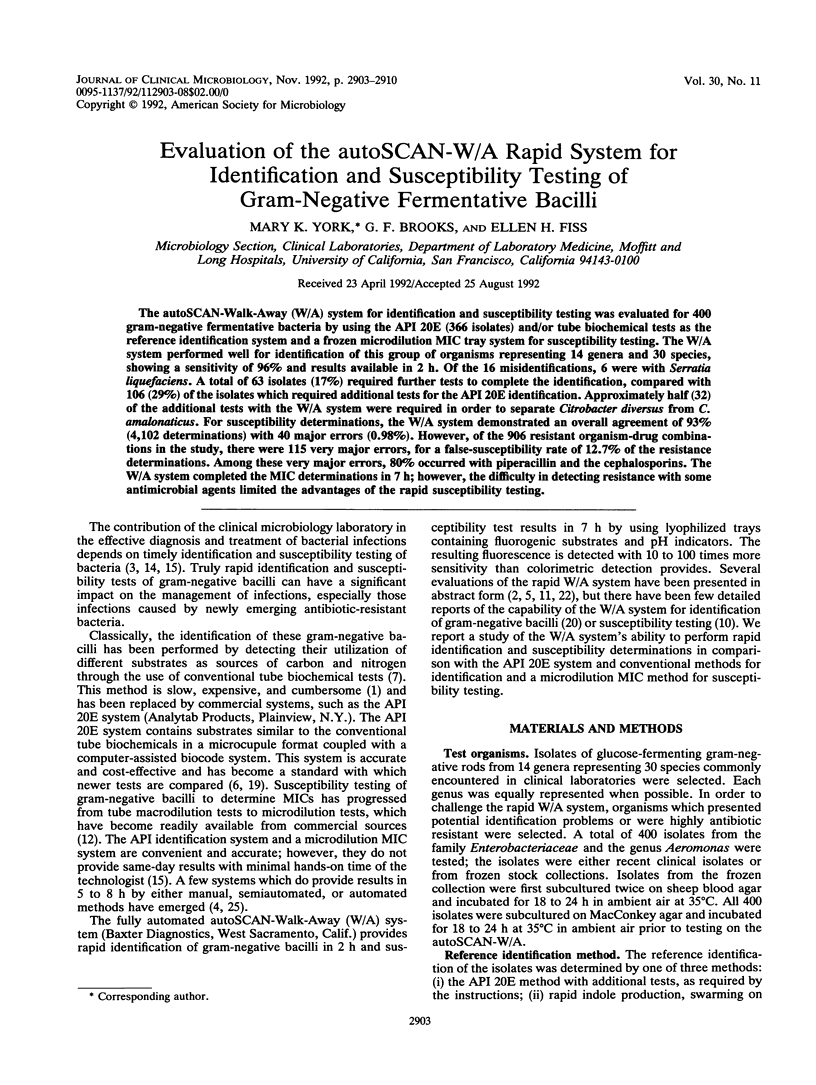
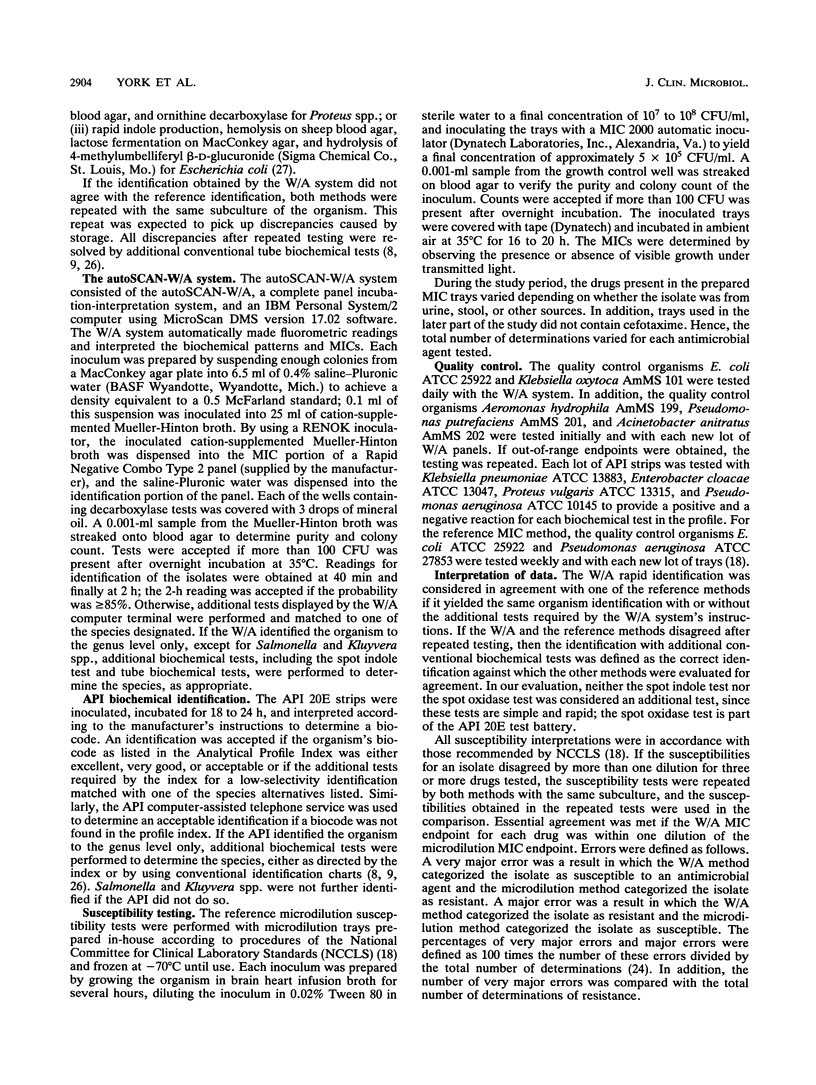

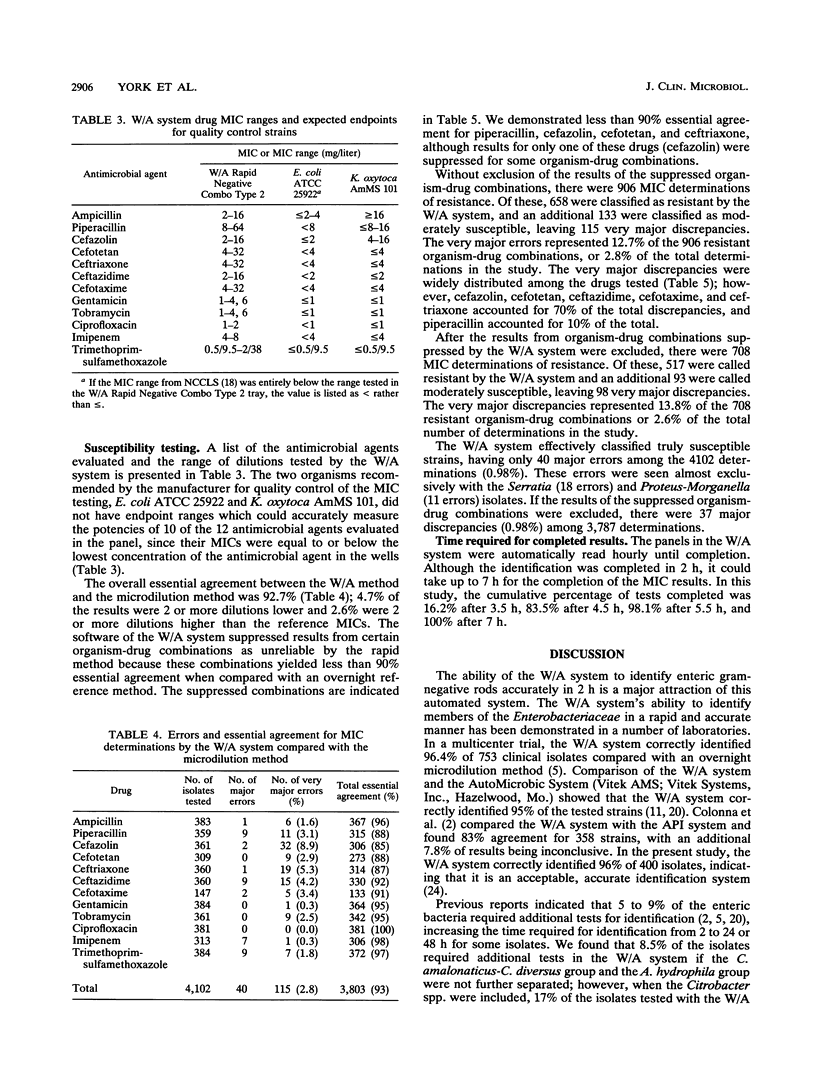
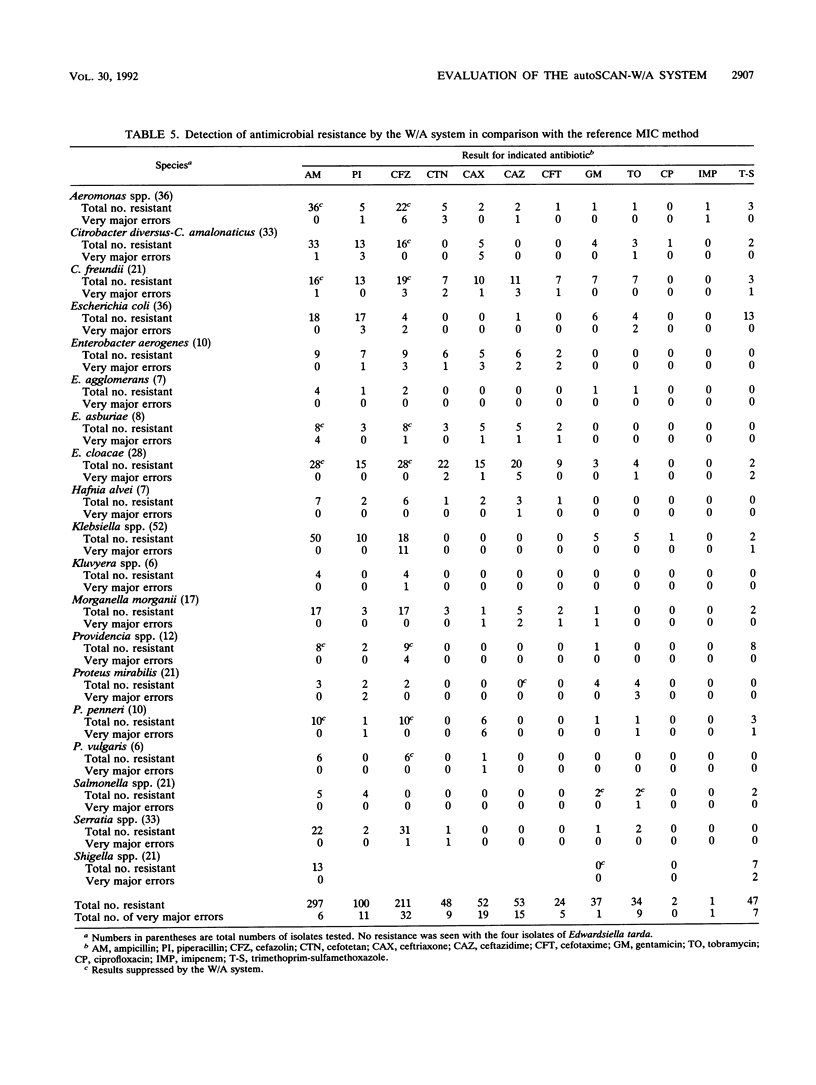
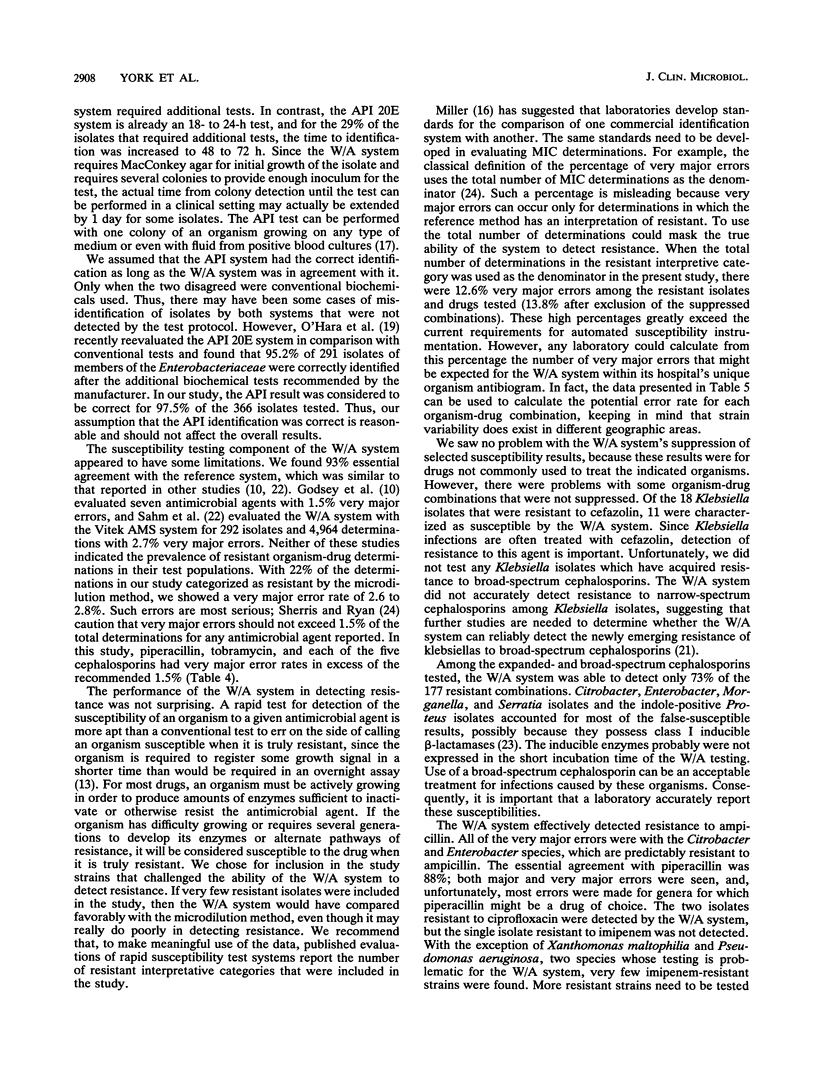


Selected References
These references are in PubMed. This may not be the complete list of references from this article.
- Bartlett R. C., Kohan T. S., Rutz C. Comparative costs of microbial identification employing conventional and prepackaged commercial systems. Am J Clin Pathol. 1979 Feb;71(2):194–200. doi: 10.1093/ajcp/71.2.194. [DOI] [PubMed] [Google Scholar]
- D'Amato R. F., Holmes B., Bottone E. J. The systems approach to diagnostic microbiology. Crit Rev Microbiol. 1981;9(1):1–44. doi: 10.3109/10408418109104485. [DOI] [PubMed] [Google Scholar]
- DiPersio J. R., Dyke J. W., Vannest R. D. Evaluation of the updated MS-2 Bacterial Identification system in comparison with the API 20E system. J Clin Microbiol. 1983 Jul;18(1):128–135. doi: 10.1128/jcm.18.1.128-135.1983. [DOI] [PMC free article] [PubMed] [Google Scholar]
- Farmer J. J., 3rd, Davis B. R., Hickman-Brenner F. W., McWhorter A., Huntley-Carter G. P., Asbury M. A., Riddle C., Wathen-Grady H. G., Elias C., Fanning G. R. Biochemical identification of new species and biogroups of Enterobacteriaceae isolated from clinical specimens. J Clin Microbiol. 1985 Jan;21(1):46–76. doi: 10.1128/jcm.21.1.46-76.1985. [DOI] [PMC free article] [PubMed] [Google Scholar]
- Godsey J. H., Bascomb S., Bonnette T., Kangas M., Link K., Richards K., Tomfohrde K. M. Rapid antimicrobial susceptibility testing of gram-negative bacilli using Baxter MicroScan rapid fluorogenic panels and autoSCAN-W/A. Pathol Biol (Paris) 1991 May;39(5):461–465. [PubMed] [Google Scholar]
- Lampe M. F., Aitken C. L., Dennis P. G., Forsythe P. S., Patrick K. E., Schoenknecht F. D., Sherris J. C. Relationship of early readings of minimal inhibitory concentrations to the results of overnight tests. Antimicrob Agents Chemother. 1975 Oct;8(4):429–433. doi: 10.1128/aac.8.4.429. [DOI] [PMC free article] [PubMed] [Google Scholar]
- Miller J. M. Evaluating biochemical identification systems. J Clin Microbiol. 1991 Aug;29(8):1559–1561. doi: 10.1128/jcm.29.8.1559-1561.1991. [DOI] [PMC free article] [PubMed] [Google Scholar]
- O'Hara C. M., Rhoden D. L., Miller J. M. Reevaluation of the API 20E identification system versus conventional biochemicals for identification of members of the family Enterobacteriaceae: a new look at an old product. J Clin Microbiol. 1992 Jan;30(1):123–125. doi: 10.1128/jcm.30.1.123-125.1992. [DOI] [PMC free article] [PubMed] [Google Scholar]
- Pfaller M. A., Sahm D., O'Hara C., Ciaglia C., Yu M., Yamane N., Scharnweber G., Rhoden D. Comparison of the autoSCAN-W/A rapid bacterial identification system and the Vitek AutoMicrobic system for identification of gram-negative bacilli. J Clin Microbiol. 1991 Jul;29(7):1422–1428. doi: 10.1128/jcm.29.7.1422-1428.1991. [DOI] [PMC free article] [PubMed] [Google Scholar]
- Sanders W. E., Jr, Sanders C. C. Inducible beta-lactamases: clinical and epidemiologic implications for use of newer cephalosporins. Rev Infect Dis. 1988 Jul-Aug;10(4):830–838. doi: 10.1093/clinids/10.4.830. [DOI] [PubMed] [Google Scholar]


